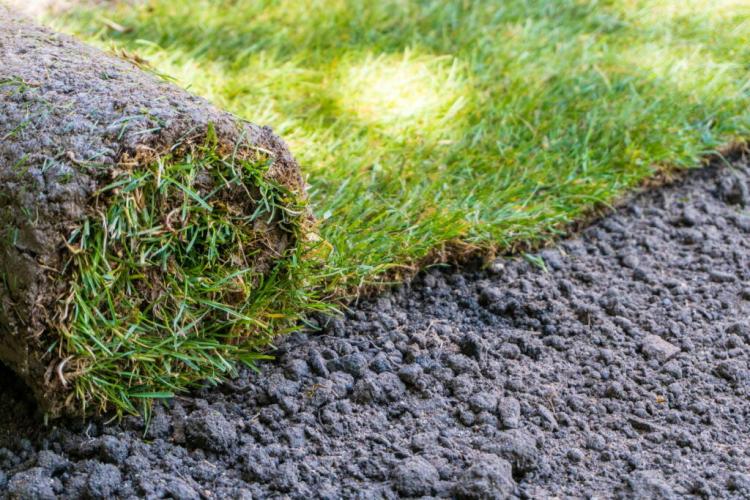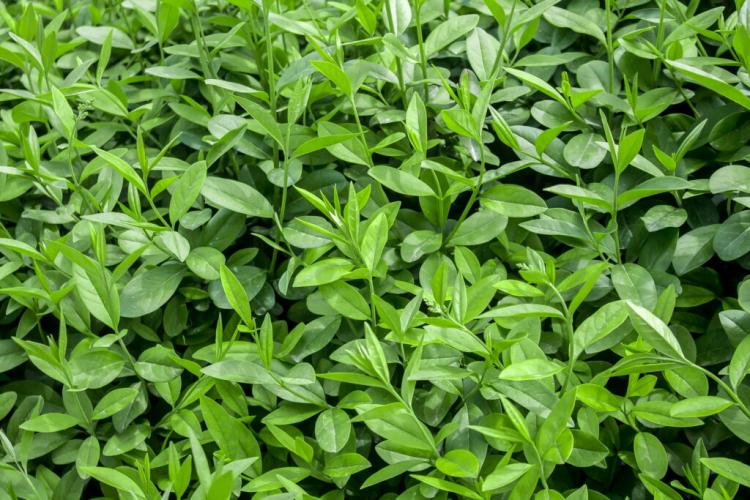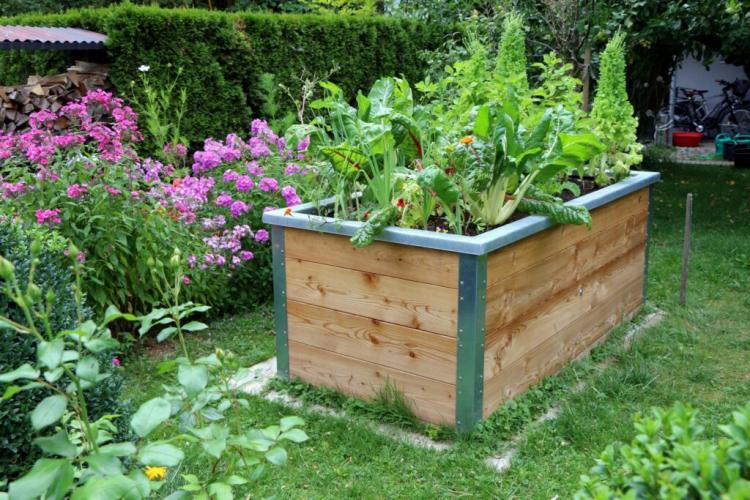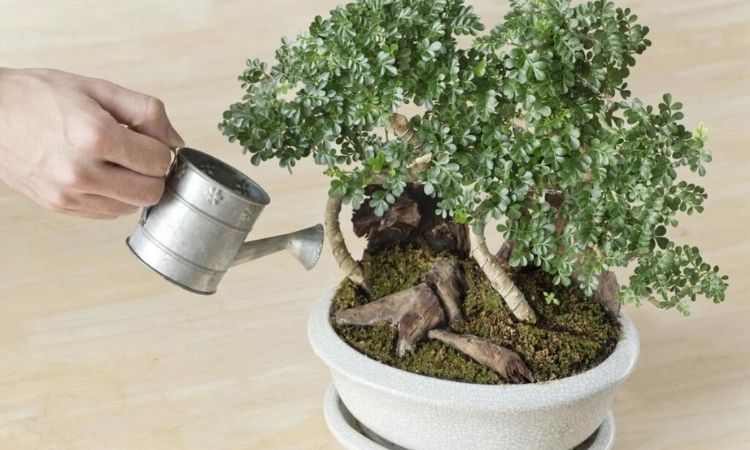Laying Turf: Advantages And Expert Guidance
Roller lawn is the comfortable alternative to sowing the lawn. We take a closer look at the laying of turf and everything that goes with it.
Laying turf is the quickest way to create a beautiful, dense lawn. Many hobby gardeners imagine it as follows: Simply roll out and you’re done! Unfortunately, it’s not that easy after all. The strenuous soil preparation must be carried out before laying the turf as well as before sowing the lawn.
Laying turf: the advantages of sowing the lawn
Table of Contents
Laying turf is tempting in many ways. Within a day, a brown surface of the earth turns into a soft green lawn carpet with a beautiful, dense sward. After only two to three weeks, the lawn is firmly rooted in the ground and can then be used in moderation. In the end, the time that is saved compared to the lawn seed before exposure is up to three months. Another advantage of the turf is its quality. High-quality turf is free from weeds, the density of the grass is ideal and there are no damaged areas. In addition, rolled turf is less sensitive to drought compared to lawn seed and can therefore be laid more flexibly when it comes to timing.
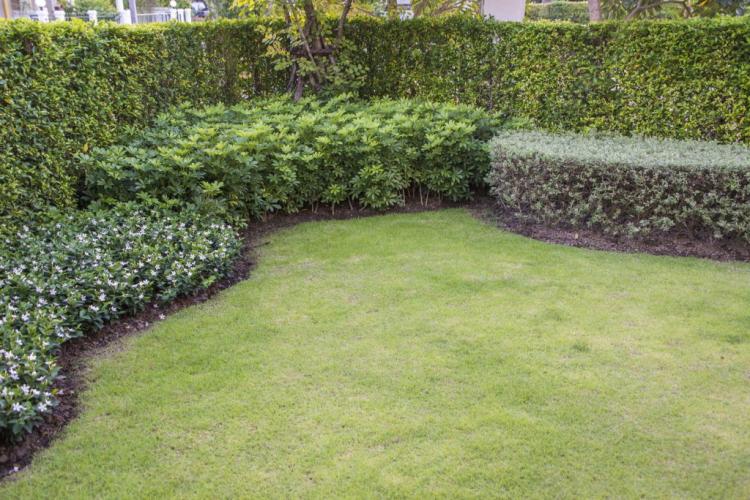
Buying turf: costs and demands
Rolled turf, also called ready-made turf, is sown on special, often sandy to slightly loamy, cultivated areas and ideally cared for a year. In most cases, the high-quality seed mixtures that are sown in optimum density and properly supplied with water and nutrients result in a dense, weed-free sward of the lawn. After about a year, the lawn is peeled off about one and a half to two cm below the soil surface using a special device, so that a large part of the root felt is retained. Usually, thin strips about 50 cm wide and one and a half to two and a half meters long are rolled up like a carpet. The turf pieces can be easily cut to size for corners, curves, and other uneven surfaces.
Prices for turf and laying
The advantages of turf naturally come at a price. The range and the differences in quality are large and the prices are accordingly diverse. Usually, the price decreases as the number of square meters increases and are around 10 euros per square meter. Many turf producers offer to collect the rolled-up turf yourself. This makes the purchase a little cheaper and is also possible with a spacious vehicle for small areas. For larger areas, however, do not forget that the rolls take up a lot of space and also bring a considerable weight with them due to the soil that is stuck in up to two cm thick root felt. With up to 20 kg for 1 m2 of turf, picking up a certain amount is no longer necessarily easy.
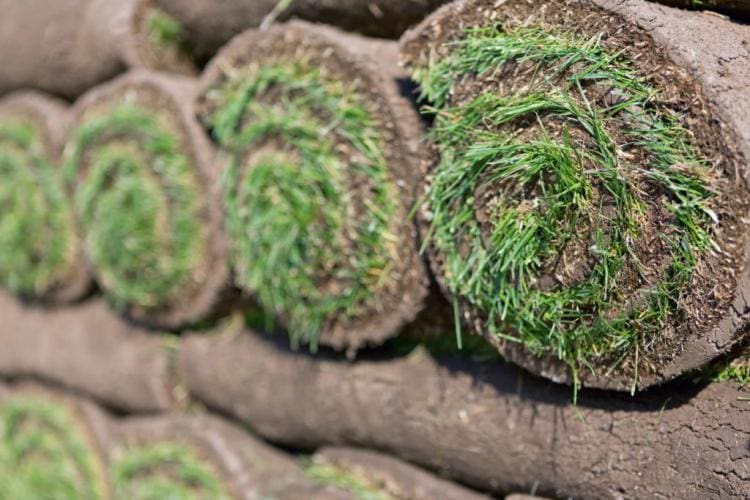
With up to 20 kg for 1 m2 of turf, picking up a certain amount is extremely strenuous.
Choosing the right turf
Since the composition of the seeds is the most important factor in a long-term, beautiful and resilient lawn, it is worth asking carefully about the combination of grasses. High proportions of German ryegrass ( Lolium perenne ) and meadow panicle ( Poa pratensis ) speak for a good composition for hard-wearing lawns for play and use. Fine-leaved species such as the braided ostrich grass (Agrostis stolonifera ) and the red ostrich grass ( Agrostis capillaris ), on the other hand, are better known for their special ornamental value. The Lägerrispe ( Poa supina ) is typical for rolled turf, which is specially designated for shady areas. If you find the grasses Lolium westerwoldicum, Lolium multiflorum, and Festuca pratensis in the grass composition of a rolled lawn, then you better stay away from this product. These three cheap types of grass, which are not suitable for garden use but agriculture, indicate poor quality.
Make sure that it is in perfect condition
The rolled-up pieces of lawn are living lawns that can dry out or rot. To prevent this, the rolled lawn is happy when it comes into contact with the ground again as quickly as possible (at best within 36 hours, at worst after 48 hours) – i.e. when it is laid. Lawn manufacturers who pay attention to particularly high quality, therefore, cut and roll the lawn according to the order. If for any reason it is not possible to lay the lawn after 36 hours, the turf can be saved, especially in dry weather, by rolling it out in a shady place and gently moistening it.
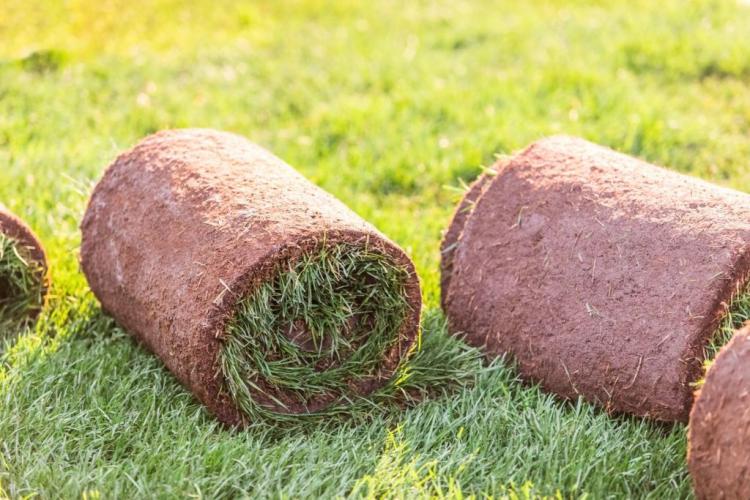
Make sure not to store the turf in the blazing sun.
Laying turf: step by step instructions
1. Select time
In principle, turf can always be laid – except for periods of frost. However, depending on the temperature and precipitation conditions, the conditions for the growth of the turf roots vary. Temperatures between 15 and 20 degrees Celsius and sufficient moisture are ideal for the roots to grow together with the soil. The better the conditions for the roots to grow, the faster the lawn can withstand loads. The best time to lay turf, as well as sowing the lawn, is early autumn or early spring. Do not buy or order the lawn until you have completed all of the ground preparations. Because the turf does not like to lie around for a long time. Within 36 hours of storage time, the turf feels most comfortable in the shade.
2. Prepare the floor for laying the turf
Soil preparations before laying turf are the same as before sowing the lawn. They include digging or milling the soil at least a few months before laying, leveling the surface, draining very heavy soils, and adding sand to loamy and compost to sandy soils. The pH should also be tested. Lime is incorporated in soils that are too acidic, and peat or bark humus (not to be confused with bark mulch) is used for soils with a pH value above 7. Immediately before laying the turf, the floor is leveled and lightly roughened with a rake. This improves the anchoring of the turf roots with the garden soil.

3. Select the correct turf
Before choosing the lawn, measure your future lawn area as precisely as possible. Compare offers from the Internet and your region. Local manufacturers usually have more favorable delivery conditions and the shorter transport route means that the sods are often fresher. Pay attention to the composition of the grass in the turf. For play and use lawns, the rolled turf should consist largely of German ryegrass ( Lolium perenne ) and meadow panicle ( Poa pratensis ). When purchasing turf for ornamental purposes or shady areas, other grasses are better.
4. Lay the turf
Unless you bought the turf along with an installation service, you will have to roll it out yourself. You start laying the first row on the longest, straight edge possible. You roll out the lawn forwards, that is, you do not step on the prepared ground surface, but on the lawn that has already been rolled out.
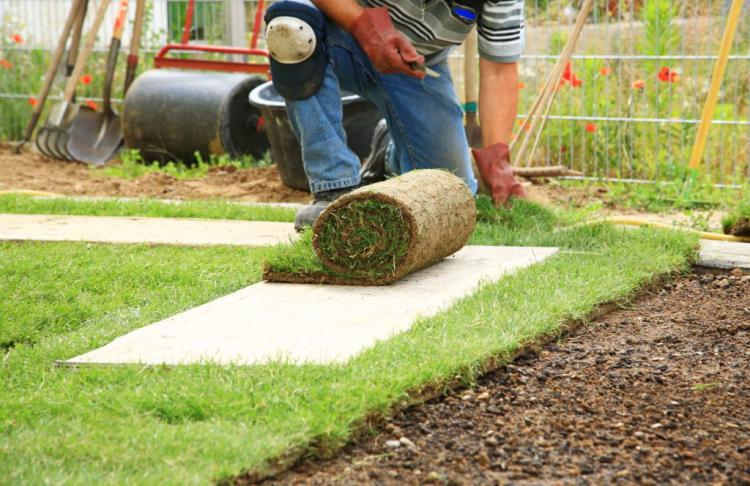
Running boards distribute the pressure evenly on the new lawn.
The adjacent rows are closely connected to the existing ones so that there are no joints or overlaps. It is normal for most of the connection points to remain easily visible. Lightly sprinkling these small joints with washed quartz sand (0.06 – 2 mm grain size) can help that the connection points of the rolls are covered better. Finally, the turf is crossed over again with the running boards at right angles to the laying direction to bring the turf roots closer to the ground and to improve the growth.
5. Maintain the installed turf correctly
Freshly laid turf must not dry out until its roots are firmly anchored in the ground and they can absorb water from the ground themselves. If watered regularly in the first 14 days after laying, the lawn will usually grow very quickly. Watering for up to eight weeks after laying is recommended, especially in dry weather, so that the lawn never dries out completely and all the work is really worthwhile.
Proper turf care
If you have decided to lay turf, your lawn is usually of high quality and fulfills good prerequisites for long weed-free, healthy and beautiful growth with the right care. So in order not to regret the expensive purchase after a few years, you should now take good care of your lawn.
Fertilize turf
Fertilizer is the nourishment and growth engine of the lawn. The amount of fertilizer to be applied changes depending on how nutritious your soil is and whether you mow or mulch. You can find more tips on fertilizing your lawn in our special article. In principle, it is recommended to fertilize the lawn once in spring (for example in February with compost or in May with nitrogen-based fertilizer such as horn shavings) and once in autumn with a potassium-based autumn fertilizer, such as our organic autumn lawn fertilizer. We recommend that you take a soil sample every three years to optimally supply the soil and lawn with nutrients.
Water the turf
Grown turf does not differ from ordinary lawns when it comes to maintenance. In summer the soil mustn’t dry out completely. That is why the lawn is watered in the morning or the evening in summer provided it has not rained for several weeks and no rain is in prospect. Always look at the soil and grasses. Dry soil and yellowish, slightly dried grass are a sign of a lack of water. In addition, watering must also be carried out after fertilization if no rain is expected. Because plants can only absorb nutrients with the help of water.

Turf should be watered regularly and not dry out.
Mow or mulch the turf
After about 14 days the lawn can be walked on and from a length of about eight cm, you can mow down to about four to five cm for the first time. Incidentally, sharp blades are extremely important when you mow for the first time. The fine blades of grass do not yet have strong roots and a blunt blade can tear out the entire plant. Have you not yet been able to decide between mowing the lawn and mulching? In moderate latitudes with normal soil, mulching is recommended as an ecological mowing variant. However, if you have very heavy or sandy soil, your lawn is in the shade, or you live in a very rainy area, classic lawn mowing may be the better alternative for you and your lawn.
Scarify, ventilate and sand the turf
The more complex maintenance measures include scarifying, airing, and sanding the lawn. Usually in the spring the moss and thatch are removed from the lawn with a special scarifier. This is important to get enough air and water to the soil surface and the grassroots.
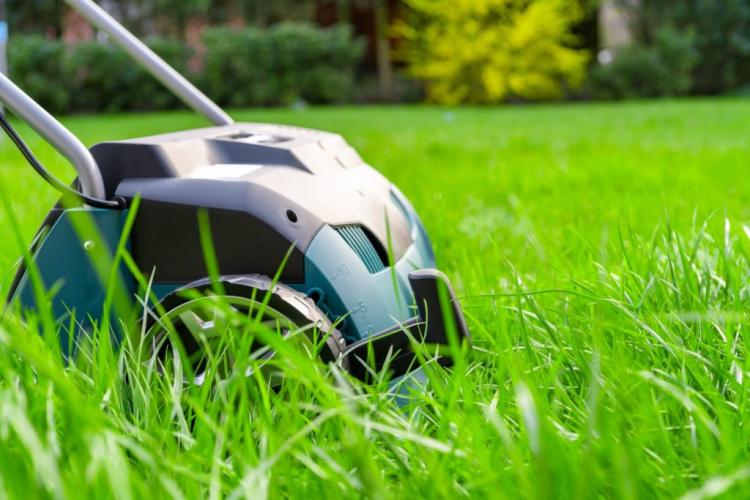
When scarifying, moss and grass thatch are removed.
Like sanding, aerating the lawn is more likely to be carried out on heavy, poorly permeable soils after scarifying and ensures better aeration. Finally, there is the lawn sand. It improves the soil structure in the long term and contributes to the sustainability of scarifying and ventilation. For example, our Premium lawn sand made of pure quartz sand with a fine grain size of 0.3 to 1 mm is extremely suitable. After these measures or together with the sanding, the lawn is then fertilized.
